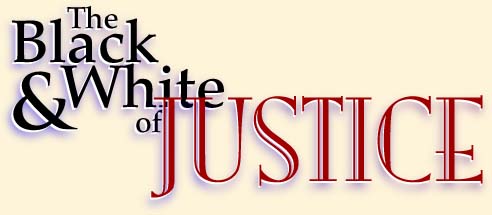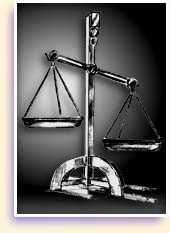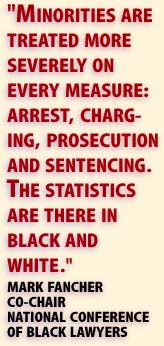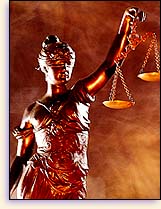

by Thomas G. Whittle & Aron C. Mason
 On a December day in 1968, Elmer “Geronimo” Pratt was in Oakland, California, at a meeting of black American activists discussing means to advance the rights of people of color in America. At the same time, a woman named Caroline Olsen was shot to death in Santa Monica, 400 miles away.
On a December day in 1968, Elmer “Geronimo” Pratt was in Oakland, California, at a meeting of black American activists discussing means to advance the rights of people of color in America. At the same time, a woman named Caroline Olsen was shot to death in Santa Monica, 400 miles away.
Pratt could never have guessed that events had been set in motion that would lead to his conviction for the murder four years later and land him with more than 25 years in a state penitentiary, after a massive frame-up and cover-up by corrupt law enforcement officers.
 Not until nearly two years later, when Pratt had become prominent as the new leader of the Black Panther Party, was he charged with the murder and jailed. Then two more years passed, and in 1972, he was tried and convicted of the shooting and remains incarcerated to this day.
Not until nearly two years later, when Pratt had become prominent as the new leader of the Black Panther Party, was he charged with the murder and jailed. Then two more years passed, and in 1972, he was tried and convicted of the shooting and remains incarcerated to this day.
Today he has become a cause celebre for his fellow activists and a major-league legal team, headed by Johnnie Cochran, has taken on the case. In February, lawyers moved for a new trial, charging that important evidence was concealed or destroyed which prevented Pratt from receiving a fair trial. “The evidence shows that a man was wrongfully incarcerated for more than 25 years for a crime he did not commit,” Cochran told Freedom.
His defense team says they have unequivocal evidence that proves Pratt innocent, including eyewitnesses and other documentary evidence. Jeanne Hamilton, a woman who sat on the jury which originally convicted Pratt and who subsequently saw the evidence now in the possession of Pratt’s counsel, said, “With the amount of information that has come out from various different sources, including FBI documents, I think that every member of the jury was betrayed. I know. I was there.”
Pratt’s case promises to become the case of the year as one of the most stunning instances in judicial annals of systematic injustice against a minority.
But what is even more explosive is the reason why that evidence never made it into the 1972 trial.
M. Wesley Swearingen, a 25-year FBI agent and author of FBI Secrets, told Freedom, “There is no question whatsoever that Pratt was framed for the murder. Pratt was in Oakland when it happened. He was set up by the Los Angeles Police Department and the FBI. They wanted to get him because he was the new leader.”
Swearingen would know. He served on the FBI’s “racial squad,” which targeted black leaders, at the time he says Pratt was framed. He says a total of three wiretaps were known to the FBI placing Pratt in Northern California before, during and after the Olsen murder, and yet the bureau withheld this information from the court and the jury. Nor did the bureau tell the court or the jury that Pratt was a target to be neutralized under J. Edgar Hoover’s notorious COINTELPRO (Counter-Intelligence Program).
James McCloskey, founder of Princeton, New Jersey-based Centurion Ministries, which provides investigative support for indigent people wrongfully convicted of capital crimes, said, “I have conducted an exhaustive reinvestigation of every single facet of this case for 3 1/2 years, and I have absolutely no doubt that Pratt is completely innocent of this crime.”
 Pratt, 21 years old and a freshman at UCLA at the time of the shooting, served two tours in Vietnam and was awarded the Silver Star, Bronze Star and two Purple Hearts. He became head of the Los Angeles chapter of the Black Panther Party after the group’s two leaders—fellow UCLA students—were shot and killed.
Pratt, 21 years old and a freshman at UCLA at the time of the shooting, served two tours in Vietnam and was awarded the Silver Star, Bronze Star and two Purple Hearts. He became head of the Los Angeles chapter of the Black Panther Party after the group’s two leaders—fellow UCLA students—were shot and killed.
As incredible as Pratt’s story is, it is not unique. Pratt has at least obtained legal representation and an audience for his story. There are countless other stories, which, though unheralded, have resulted in broken lives—and worse. Tragedies where there is no reporter breaking the story, no high-profile lawyer to champion the cause, no hope.
“Chris” is a real-life case in point. He was born and raised in a middle-class neighborhood. He went to public schools. He enjoyed hiking and basketball. He could have been your neighbor, or a friend of your children.
One Saturday, he was playing basketball with his friends—friends who, unbeknownst to him, were spending time in the service of a local gang. Police officers appeared on the scene and arrested these friends on suspicion of involvement in a liquor store hold-up. They arrested him, too, as he “fit the description” of a suspect in the crime — he was the same color, wore the same type of clothes, had the same accent, and was roughly the same age, in his late teens.
Chris’ luck went from bad to worse; the judge on his case was known for being tough on crime. Tough on certain types of defendants was more accurate. The judge appeared indifferent to the evidence Chris’ lawyer tried to present that showed his client was nowhere near the scene at the time of the crime. Chris was jailed along with his friends on charges of being an accessory to armed robbery.
Chris may not have been a criminal when he was sentenced, but things changed radically once he was “inside.”
He found himself incarcerated with hardened criminals in a prison which offered neither protection nor rehabilitation for people like him. Chris had little choice but to learn the ways of the criminal prison culture around him in order to survive.
When Chris was released on probation a year later, he emerged a criminal. And he began to work with local drug dealers as a courier. Only with the help of his family did he finally extricate himself, two years later, from the life of crime he had adopted.
Was his experience just bad luck? No. Chris is Hispanic, one of many minority groups that finds itself on the receiving end of undeniable prejudice in the judicial system.
To minorities, the court system is command central for a world where a campaign of passive and active discrimination is waged against them. And where, bit by bit, minorities are forced into more and more criminal environments with no alternative.
According to a January 1996 report from the Council on Crime in America, “America is a ticking violent crime bomb, and there is little time remaining to prepare for the blast.” The Council predicted that by the year 2000, violent juvenile crime and weapons offenses “could spiral out of control.”
After a similar report was published by the FBI in November last year, agency director Louis Freeh said, “The ominous increase in juvenile crime coupled with population trends portend future crime and violence at nearly unprecedented levels.”
This is chilling considering current levels. Over the last 10 years, Americans murdered 200,000 Americans and maimed or wounded millions more. Experts say the murder rate may soon double. Americans today employ 1.5 million private security guards, but do not feel safe.
If the real issues are not addressed soon, and with even a conservative extrapolation of crime trends, five years from now the 1990s are going to look like a Golden Age by comparison. And that concerns everyone.
Freedom conducted a two-part investigation, first into the extent of discrimination within the courts and law enforcement, and then into the cause of the problem. We believe we have exposed the answers to the question of why the judicial system discriminates. In the process, some startling facts arose — symptoms of just how deeply flawed is the judicial system as we know it today.

In six California counties independently surveyed in 1995, 100 percent of those sent to trial on drug charges were minorities, while the drug-using population in these same counties was more than 60 percent white — and relatively untouched by law enforcement.
Nkecha Taifa, director of the Public Services Program at Howard University School of Law and co-chair of the Criminal Justice Section of the National Conference of Black Lawyers, said, “Invariably, people of color and the poor are subjected to disparate treatment at every stage of the criminal justice system, from arrest, prosecution and pretrial, to conviction, sentencing and parole decisions. That disparate treatment is a direct reflection of the institutionalization of racism in the system.”
Systemic racism is reflected in the unprecedented explosion of incarcerations. The United States prison population has surpassed the 1.5 million mark, and, said Taifa, “55 percent of that is black, despite the fact that blacks are only 12 percent of the U.S. population.”
A February 1996 study from the Center on Juvenile and Criminal Justice found that 39 percent of California’s black men and 10 percent of the state’s Hispanic men in their 20s are in prison, jails or on probation — compared to only 5 percent of white men in their 20s.
Taifa noted that black men are incarcerated at a rate five times higher in the United States than they had been in South Africa under apartheid — and that more black men are in prison in America than are in college.
The long-range effects of the criminalization of a race are shattering. Taifa points to the long-term results of incarceration: a stigmatizing felony record, which carries negative consequences for future employment and virtual disenfranchisement for a large segment of the population.
She calls the situation “judicial apartheid.”

A recent study in Minnesota showed that blacks are 27.7 times more likely than whites to be locked away in state prisons.
University of Minnesota Law Professor Michael Tonry has pointed out that nationwide incarceration rates for blacks have rocketed far ahead of those for whites — even though no commensurate increases occurred in black violence or drug use.
The National Institute of Drug Abuse estimated that while 12 percent of drug users are black, they made up nearly 50 percent of all drug possession arrests in a one-year period. Similar inequalities show up at each subsequent step of the judicial process.
Mark Fancher, co-chair of the National Conference of Black Lawyers, told Freedom, “The entire criminal justice system from top to bottom provides unequal treatment. Minorities are treated more severely on every measure: arrest, charging, prosecution and sentencing. The statistics are there in black and white.”
A former U.S. Justice Department official pointed to the bias-ridden enforcement of cocaine laws. Ninety percent of crack arrests and convictions involve blacks, even though an estimated two-thirds of the nation’s crack users are white.
A senior federal law enforcement official concedes that the nation’s drug enforcement efforts are today overwhelmingly concentrated on blacks and Hispanics, and the statistics reveal a concerted law enforcement effort to apprehend and incarcerate minority violators. The former Justice Department official calls it part of a broad discriminatory picture where “a black who commits a crime is far more likely to end up in prison than a white who commits the same offense.”

